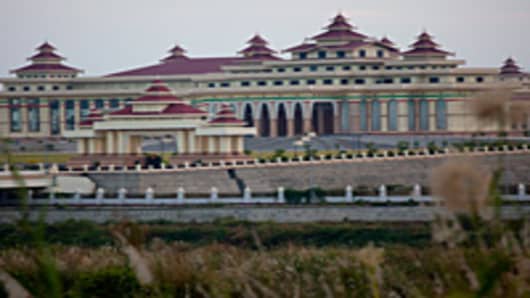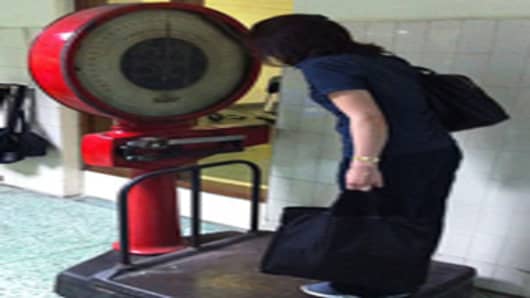When I heard that the World Economic Forum’s (WEF) next regional meeting in 2013 was going to take place in Naypyidaw, I had just gotten back from the Myanmar capital on a two-day journey that felt more like a week. Many people tell me they want to visit this land of architectural wonders before hordes of others do during Myanmar’s awakening. In this case though, I can tell you that there are practical reasons why some roads are less traveled than others.
There are two ways to get from the commercial hub of Yangon to the new-ish seat of government Naypyidaw – drive or fly. (If you are an average local citizen, there is only one way because you are not allowed to take the plane.) For the sake of logistics and curiosity, I decide to try both.
The Tokyo agent for Myanmar Airways International handles the airplane tickets. The one-way fare for the 30-minute flight costs $186. You can pay by bank transfer or pay a 4 percent premium if you want to pay by credit card. There is only one flight that leaves at 7 a.m. and you must be at the counter at 5 a.m. It is possible that the plane will not take off and be canceled. There will be no refund.
I always thought having too many choices was an overrated experience.
So there we are at 4:50 a.m. in the pitch dark. Suddenly I miss Mingaladon International Airport, the remarkably smooth international gateway that greeted me to Myanmar a few days earlier. My current flight leaves from a nameless airport for domestic flights only.
Never one to travel light, the officer glances at our bulky camera gear and suspects we are overweight. He loads it onto a scale the size and color of a London telephone box, likely to have been made around the time Sir Giles Gilbert Scott designed his first kiosk in 1924.
“You have 18 kilos excess,” the agent says. He decides not to charge me and my mood suddenly lifts. (The scale is marked “Edinburgh” and I can vouch for its accuracy – see picture).
Ninety minutes later, I am about to climb aboard my plane, which was built by the now-bankrupt Fokker. I ask my quasi travel companion, a CEO of a major Japanese corporation, how many times he has made this trip.
“Four. You’re lucky. Before it was more like Indiana Jones,” he says.
Half an hour later, I land in Naypyidaw and forget in an instant what the fuss was all about. Our old plane is parked next to three sparkling private jets. The airport is spotless and could pass for a new wing at Tokyo’s Haneda airport. Even the CEO is amazed at the transformation over the last six months. Our luggage slides out in minutes and we are whisked to our hotel. Mostly everything in Naypyidaw is under seven years old because that’s when fields of shrub land were suddenly transformed and crowned as the capital. Ahead of the WEF and the 27th Southeast Asian Games in 2013, expect a flurry of public works spending.
With one’s mission accomplished, I ready for my five-hour drive back to Yangon. In retrospect, I should have known what lay ahead. Our local guide had told me in no uncertain terms, twice in fact, that the concrete roads and dry heat were rough on the tires. I got one last piece of advice from the same CEO as I left the lobby – go to the toilet now.
There’s only one real pit spot on the 400-kilometer journey. At that two-thirds mark, we stop to rest. Tea is suggested. We sip for 20 minutes. As we climb back into our car, a small group of young boys sees us off. What they witness is a wobbly car with a flat tire.
You’d think that if you had a flat tire in the middle of no man’s land as dusk was descending and there is only one make shift repair shop (conveniently just around the bend from where we got our flat tire), there’d be a bit of angst. When I detect from our driver and our guide that there will be nothing of the sort, I too fall into the rhythm of what must have been a planned part of our journey back to home base.
The repairman finds the cause of our ruptured wheel. It’s a two-inch tip of a screwdriver, sawed into an even finer point than normal. He removes it, fills the tire with some air. He plugs the hole with a piece of wood on standby. It fits precisely, or at least snugly enough so the tire lasts for the remaining 100-kilometer drive back to Yangon.
The next morning, I run into the CEO’s team. I thank them for their advice and tell them about the flat tire.
“There are two theories I can think of,” one of the veteran team members offers. No matter, I figure his theories are not so different from mine. Then again, they’re only theories.



